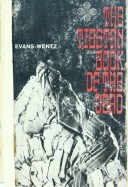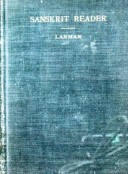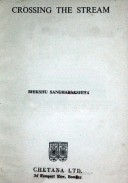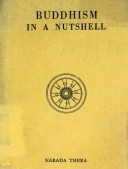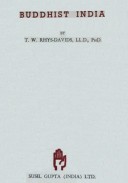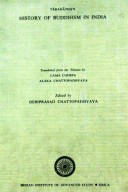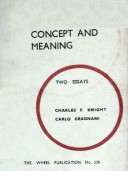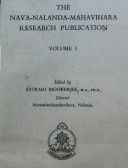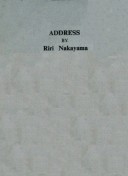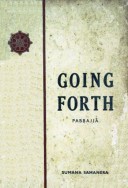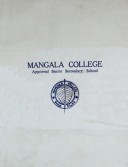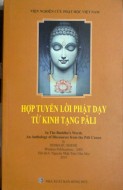Tìm Sách
Sách tiếng Anh-English >> The Tibetan Book of The Dead
Thông tin tra cứu
- Tên sách : The Tibetan Book of The Dead
- Tác giả : W. Y. Evans-Wentz
- Dịch giả : W. Y. Evans-Wentz
- Ngôn ngữ : Anh
- Số trang : 241
- Nhà xuất bản : Oxford University Press
- Năm xuất bản : 1959
- Phân loại : Sách tiếng Anh-English
- MCB : 1210000003544
- OPAC :
- Tóm tắt :
The Tibetan Book of The Dead or the after death experiences on the Bardo Plane according to Lama Kazi Dawa Samdup's English Rendering
Compiled & Edited by W. Y. Evans-Wentz
PREFACE TO THE PAPERBACK EDITION
That the living do come from the dead, as Socrates intuitively perceived as he was about to drink the hemlock and experience death, this treatise maintains, not in virtue of tradition or belief, but on the sound basis of the unequivocal testimony of yogins who claim to have died and re-entered the human womb consciously.
If this treatise, bequeathed to the West by Sages of the Snowy Ranges, be as it thus purports to be, it undoubtedly offers trustworthy guidance at the time of death and in the after-death state into which every one of human kind must inevitably pass, but of which very few of them have enlightened understanding. It is, therefore, of inestimable value.
The exploration of Man the Unknown in a manner truly scientific and yogic such as this book suggests is incomparably more important than the exploration of outer space. To stand in the physical body on the Moon, or on Venus, or on any of the celestial spheres, will add to human knowledge, but only to knowledge of things transitory. Man’s ultimate goal is, as the Sages herein teach, transcendence over the transitory.
Today, as during the European Renaissance when Oriental influences inspired a number of remarkable treatises on the Art of Dying (to which reference is hereinafter made), there is an ever- increasing desire to know more of man’s origin and destiny. As the recently deceased Great Teacher Bhagavan Sri Ramana Maharshi, of Tiruvannamalai, South India, admonished me when I sojourned in his ashram, each of us should ask ourself, ‘Who, or what, am I? Why am I here incarnate? Whither am I destined? Why is there birth and why is there death?
These are for mankind the supreme questions; and in any attempt to answer them this book offers aid, which the editor is glad to be able to report has been universally acknowledged, not only by representatives of various faiths, inclusive of both Catholic and Protestant Christians, but by scientists as well. Dr. C. G. Jung, the eminent dean of psychologists, has himself recognized the unique value of the book and in his lengthy Psychological Commentary to it, herein contained, says, Tor years, ever since it was first published I in 1927], the Bardo Thodol has been my constant companion, and to it I owe not only many stimulating ideas and discoveries, but also many fundamental insights.’ .
The sponsoring by the Oxford University Press of this the fourth and American edition and the sixth printing of The Tibetan Book of the Dead, here published as an Oxford University Press paperback, is itself indicative of the book’s ever-widening appeal. And may the book in this new edition continue to fulfil the hopes of its translator and editor, by assisting to bring about not only better understanding between the peoples of the East and West, but also in correcting, especially throughout the West, the lack of Right Knowledge concerning humanity’s paramount problem, the problem of birth and death.
The editor accepts the opportunity afforded by this American edition to thank those who more recently have given expression, in journals and in lectures, as well as by letters, of their appreciation of the book, as already he has thanked those who previously did so. It is owing to these appreciative journalists, lecturers, and readers, in all parts of the world, that the book’s marked success has been made possible.
And in conveying good wishes to all those who have read or shall hereafter read this book, particularly students, the editor has the high privilege of here directing their attention to the significant words contained in the farewell teachings of Milarepa, one of his most beloved Tibetan Gurus:
‘Combine, in a single whole, the goal of aspiration, the meditation, and the practice, and so attain Understanding by Experimentation.
‘Regard, as one, this life, the next life, and the life between, in the Bardo, and accustom thyself to them thus, as one.’
By practically applying these teachings, so the Gurus assure us, the supramundane goal revealed by this book will be, as if was for Milarepa, realizable.
W.Y.E.-W.
San Diego, California,
Midsummer Day, 1959.
PREFACE TO THE THIRD EDITION
It is with a consciousness of the deepest gratitude that I write this Preface. No greater honour could be shown by the Western World to this Tibetan treatise on the Science of Death and Rebirth than that shown by the most illustrious of the West’s psychologists, Dr. Carl G. Jung, in his Psychological Commentary to it, first published in the Swiss edition of The Tibetan Book of the Dead, Das Tibetanische Totenbuch, by RascherVerlag,Zurich, 1938, and herein presented in English translation for the first time. And no exposition of the arcane significance of the book’s teachings could have been written more knowledgeably than that set forth in the Introductory Foreword hereto, in its original English form, by the learned Lãma Anagarika Govinda.
The Editor and all who read this book are indebted to Dr. Jung and to Lãma Govinda for having made this enlarged and greatly enriched edition possible, and to Mr. R. F. C. Hull, also, for his able translation from the German of Dr. Jung’s Psychological Commentary. Grateful acknowledgement, too, is here made to the Bollingen Foundation for the granting of permission to publish the English translation of the Psychological Commentary.
To each member of the One Human Family, now incarnate here, on the planet Earth, this book bears the greatest of all great messages. It reveals to the peoples of the Occident a science of death and rebirth such as only the peoples of the Orient have heretofore known.
Inasmuch as all mankind must relinquish their fleshly bodies and experience death, it is supremely profitable that they should know how rightly to meet death when it comes. Lima Govinda makes comprehensible, as the Ancient Mysteries did, and as the Upanishads declare, that the unenlightened meet death after death unceasingly.
According to the Avatara Krishna, in the Bhagavad-Gita, only the Awakened Ones remember their many deaths and births. The Buddha sets forth the yogic method whereby all who doubt these teachings, concerning a plurality of births and deaths, can prove them to be true, as He did, by self-realization.
The argument of the unenlightened man, that, merely because he himself has no conscious memory of his many births and deaths, the teachings are untrue, is scientifically untenable. The field of the normal man’s sense perceptions is, as can be demonstrated, narrowly circumscribed and extremely limited. There are objects and colours he cannot see, sounds he cannot hear, colours he cannot smell, tastes he cannot taste, and feelings he cannot feel. And beyond his work-a-day consciousness, which he assumes to be his only consciousness, there are other consciousnesses, of which yogins and saints have cognizance, and of which psychologists are beginning to glean some, but as yet very little, understanding. As Lãma Govinda concisely explains, there exists, in completeness, in a potentially realizable consciousness, the memory of a forgotten past, in which each of us now incarnate shares.
In his Psychological Commentary, Dr. Jung points out that although Freud’s ‘is the first attempt made by the West to investigate, as if from below, from the animal sphere of instinct, the psychic territory that corresponds in Tantric Lãmaism, to the Sidpa Bardo’, or state of reincarnating, ‘a very justifiable fear of metaphysics prevented Freud from penetrating into the sphere of the “occult”. In this, Freud was typically non-Oriental, and fettered by his own self-imposed limitations. But such self-imposed limitations of Western Science, which are very much like those that Western Theology imposed upon itself by refusing to take into proper account the esoteric in Christian tradition, cannot always hold back psychological research. Dr. Jung himself has, indeed, gone far beyond these limitations of Freud, his predecessor. It is therefore not possible’, Dr. Jung states, ‘ for Freudian theory to reach anything except an essentially negative valuation of the unconscious ’—wherein are stored, apparently imperishably, as Dr. Jung holds, the records, in completeness, of mankind’s past. At a conclusion parallel to this of Western Science, Lama Govinda arrived by means of Eastern Science.
Dr. Jung reports that ‘psychoanalysts even claim to have probed back to memories of intra-uterine origin’; and that had Freudian psychoanalysis succeeded in pursuing these so-called intra-uterine experiences still further back, ‘it would surely have come out beyond the Sidpa Bardo and penetrated from behind into the lower reaches of the Chonyid Bardo.’ But, as he points out, ‘with the equipment of our existing biological ideas such a venture would not have been crowned with success; it would have needed a wholly different kind of philosophical preparation from that based on current scientific assumptions. But, had the journey back been consistently pursued, it would undoubtedly have led to the postulate of a pre-uterine existence, a true Bardo life, if only it had been possible to find at least some trace of an experiencing subject.’
Western psychologists have, therefore, advanced appreciably beyond Freud in the study of the psychic life of man, and will advance much further when they no longer allow the Freudian fear of metaphysics to bar their entrance into the realm of the occult. This finds ample support in Dr. Jung’s further pronouncement:
‘I think, then, we can state it as a fact that with the aid of psychoanalysis the rationalizing mind of the West has pushed forward into what one might call the neuroticism of the Sidpa [or Rebirth] state, and has there been brought to an inevitable standstill by the uncritical assumption that everything psychological is subjective and personal. Even so, this advance has been a great gain, inasmuch as it has enabled us to take one more step behind our conscious lives.’
Thus it is of far-reaching historical importance that the profound doctrine of pre-existence and rebirth, which many of the most enlightened men in all known epochs have taught as being realizable, is now under investigation by our own scientists of the West. And some of these scientists seem to be approaching that place, on the path of scientific progress, where, as with respect also to other findings by the Sages of Asia long before the rise of Western Science, East and West appear to be destined to meet in mutual understanding.
Apparently, however, before this much-desfred understanding can be attained, there must be, as Dr. Jung observes, 4 a wholly different kind of philosophical preparation’ from that based upon the West’s 4 existing biological ideas’. May it not be that 4 heretical’ Western psychologists who are prepared to blaze a new path of research will eventually find the lacking complement to their at present inadequate methods in the psychological I techniques of oriental yoga, such as those referred to in Lãma Govinda’s Foreword? At least the writer believes that they will. According to his view, that much sought-after higher understanding of the human psyche will be won not by these admittedly inadequate Freudian methods, now in vogue, of ‘psychoanalyzing’ a subject, but by meditation and an integrating self-analysis, such as the master yogins employ and the Buddha prescribes. He believes, too, that thereby Western Science and Eastern Science will, at last, attain at-one-ment.
Then, when that long-awaited at-one-ment shall have been consummated, there will no longer be doubt, nor fallacious argumentation, nor unwise and unscientific Church-Council anathematizations directed against that paramount doctrine of pre-existence and re-birth, upon which the Bardo Thõdol is based. Then, too, not only will Pythagoras and Plato and Plotinus, and the Gnostic Christians, and Krishna and the Buddha be vindicated in their advocacy of the doctrine, but, equally, the Hierophants of the Ancient Mysteries of Egypt and Greece and Rome, and the Druids of the Celtic World. And Western man will awaken from that slumber of Ignorance which has been hypnotically induced by a mistaken Orthodoxy. He will greet with wide-opened eyes his long unheeded brethren, the Wise Men of the East.
As set forth in my first important work, The Fairy-Faith in Celtic Countries, forty-four years ago, the postulate of rebirth implies a scientific extension and correction of Darwin’s conception of evolutionary law,—that alone through traversing the Cycle of Death and Birth, as taught by our revered ancestors, the Druids of Europe, twenty-five and more centuries ago, man attains in the spiritual and psychic sphere that destined perfection which all life’s processes and all living things exhibit at the end of their evolutionary course, and from which at present man is so far removed.
May this third edition of the first volume of the Oxford Tibetan Series bear to all who read it the good wishes of its compilers, not only of those of them who dwell in far-away Tibet and Hindustan, but, also, of those of them who dwell in the Western World. And may we heed the solemn admonition set forth in this book—not to fritter away in the worthless doings of this world the supreme opportunity afforded by human birth, lest by our spiritual improvidence we depart from this life spiritually empty-handed.
W. Y. E-W.
San Diego, California,
Easter, 1955
 Facebook
Facebook
 Google
Google
 Google+
Google+
